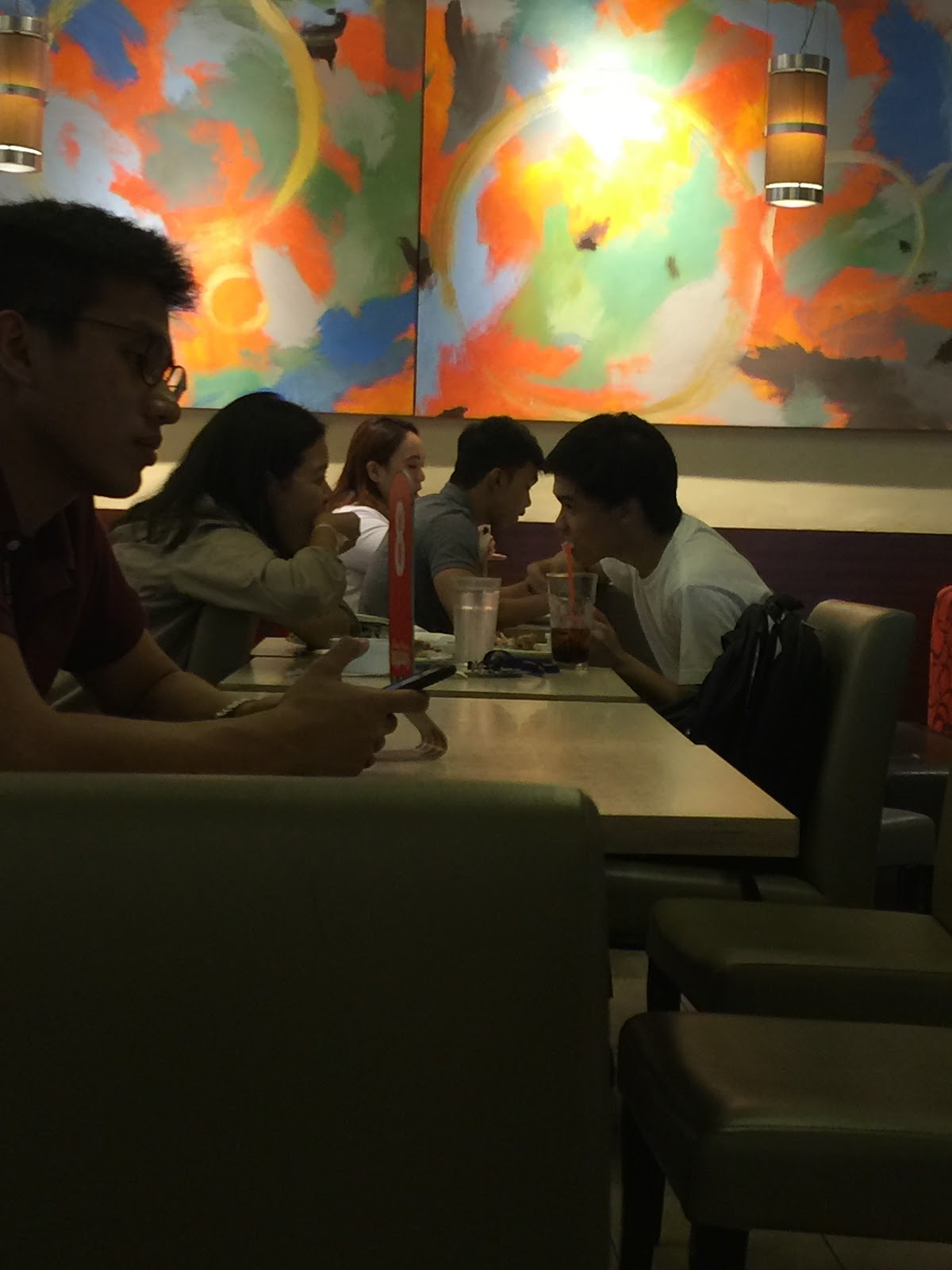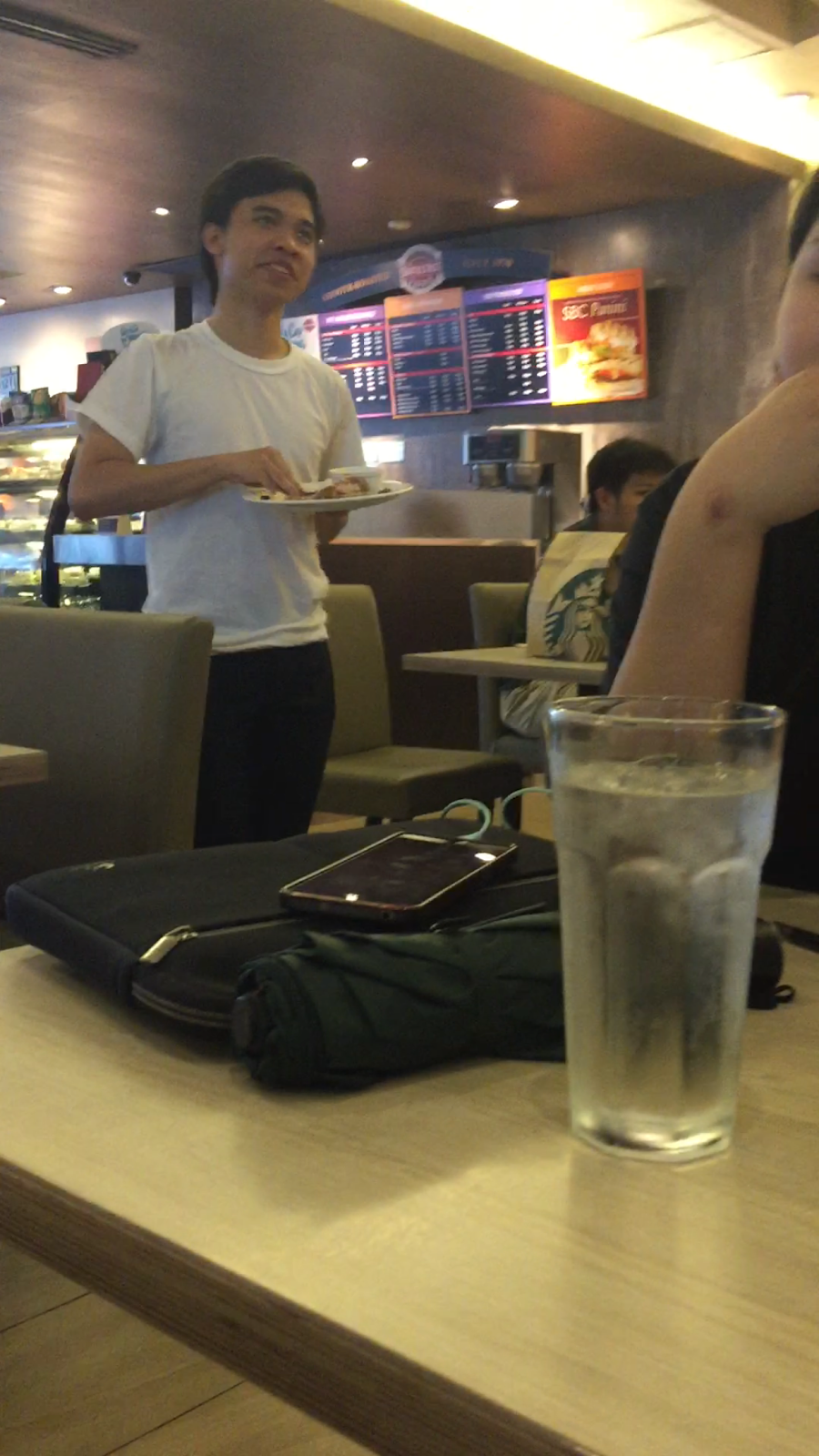1. What norm did you violate?
-
Proper
etiquette while eating in public (e.g., way of eating, way of sitting, behavior
inside the restaurant)
2. Describe the breaching experiment in
detail? What was the activity? Where did you do it?
-
Where:
Kenny Rogers (to focus on the
reactions of people in the middle to upper classes), and Jollibee (to focus on the reactions of people in the lower to
middle class)
-
Activity:
Deviance to “proper” eating etiquette
-
Did
not sit properly (1 chair - backwards, 1 chair - sideways)
-
Used
our hands while eating
-
Did
not use a spoon while eating ice cream and drank directly from the cup
-
Ordered
food or asked for something in the counter while holding the whole plate and
eating
-
Walked
around the restaurant while holding the whole plate and eating
3. What were the different reactions of
the people? List all possible reactions you observed. Why do you think they
reacted this way? What caused these reactions? Did the deviant act
re-affirm/reinforce the existing norms based on these reactions?
-
Kenny Rogers
-
Reactions:
-
When
I first turned my chair backwards, people beside me reacted differently. People
stared at me, probably wondering why I did it.
-
While
eating with my hands, the waitress in the cafe smiled and laughed at me.
-
When
I walk around while eating, a waiter approached me. They thought that I was
having problems with my dish.
-
Then,
for the second time, another waiter approached me. He was collecting my plate.
-
Insights:
-
The
staff and customers of Kenny Rogers probably reacted this way because they hold
proper eating etiquette with high regard. This includes eating with utensils,
sitting down properly, and etc.
-
They
view this as a social norm, and people who sway from this are regarded as
deviants and are judged appropriately.
-
Jollibee
-
Reactions:
-
Customers
were indifferent when we ate using our hands and our chairs turned backwards.
-
The
waiters even offered tissue.
-
Insights:
-
The
staff and customers of Jollibee probably reacted this way because they were
used to this kind of behavior.
-
Another
reason could be that they honestly did not care.
-
They
do not hold much importance to “proper” eating etiquette and do not regard them
as a social norm.
-
The
familial/kiddy vibe of Jollibee probably also contributed to the fact that our
behavior came across as something they are used to (because kids are there all
the time).
4. Aside from the norms, what
sociological themes are at play for people to react in a certain way? Is it a
function of gender, social class, values/beliefs of institutions?
-
Other
sociological themes at play were social class expectations.
-
We
conducted the experiment in Kenny Rogers and Jollibee precisely to see the
difference in social class expectations.
-
Kenny
Rogers, being a more high-end restaurant than Jollibee, expects a sense of
“class” from its customers.
-
Also,
customers eating in Kenny Rogers expect to interact with people from the same
social class with the same social graces and etiquette.
-
To
do the simple act of turning one’s chair backwards in a more high-end
restaurant definitely turns heads.
-
Furthermore,
the staff in Kenny Rogers normally deal with middle to high class customers and
have certain expectations on how they must act, hence the reaction of the
waiters.
-
Jollibee,
on the other hand, caters to low to middle class customers, which comprise the
bulk of the population.
-
Customers
expect few or no social eating etiquette, hence their indifference.
-
In
turn, the Jollibee staff does not expect any form of eating etiquette from
their customers.
-
In
summary, the different social class expectations in the two restaurants drive
people’s reactions towards social deviance.
5. How did you feel when you did this
experiment? How does it feel to deviate from the norms? Were you hesitant to do
the activity?
-
It
was embarrassing since people were looking at you
-
It
was also embarrassing to deviate from the norms because you know that people
will judge you
-
Hesitant
at first because the activity we’re going to do is not normal like you know
that some people will look at you and judge you because that’s not the proper
way of behaving in a restaurant
-
Even
though people do not notice that you’re eating differently, you can’t help but
be conscious about yourself because you don’t normally act that way, and that
might be why we are embarrassed or hesitant to do the experiment even in
establishments like Jollibee.
6. Other observations and analysis that
you may have on the activity and on deviance in general.
-
People
become deviants as others define them that way.
-
Eating
with one’s hands and not exercising “proper” eating etiquette may be classified
as deviant from the perspective of Kenny Roger’s staff and clientele, yet are
openly welcomed or not noticed at all in Jollibee.
PHOTOS




